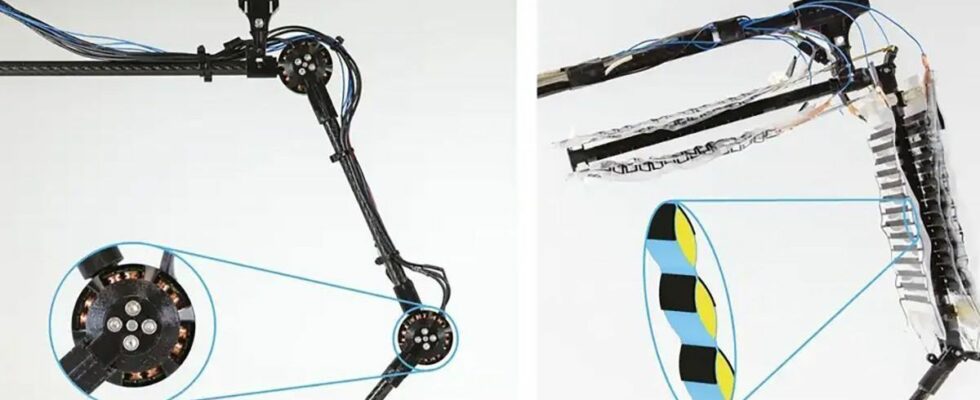Published on
updated on
Reading 2 min.
A team led by Swiss researchers announced Monday that it had designed the first robotic leg with “artificial muscles,” a kind of oil-filled pouch, allowing it to jump on different surfaces.
In a video accompanying the study, published in the journal Nature Communications, the tiny robotic leg is seen making small hops in a circle covered in grass, sand and pebbles.
The researchers hope their technique will be used for humanoid robots capable of “boring household chores,” Robert Katzschmann, a co-author of the study, told AFP.
The research team was inspired by the fact that the human body uses around 600 muscles, in order to create a robot capable of walking and jumping fluidly.
For this, she used what she calls “artificial muscles,” also known as electrohydraulic actuators.
These muscles look like small freezer bags, attached to the metal bones of the robotic leg. Filled with oil and equipped with electrodes, they contract and relax in a way that mimics the movement of an animal muscle.
Ordinary humanoid robots are made with rigid metal motors and joints similar to those used on industrial assembly lines, explained Katzschmann, a professor of robotics at the Swiss Federal Institute of Technology in Zurich.
These industrial robots are much too heavy, therefore dangerous, and too expensive for use at home, he says. A domestic robot should be able not only to carry loads but “also to give a hug or shake hands“.
The artificial muscle technique has the advantage of using less energy than a traditional motor when the robot’s knee is bent, according to the study.
And it also allows the leg to tackle difficult terrain with more agility, according to the researchers.
Research in the field of electrohydraulic actuators is relatively recent.
The tested leg performs jumps of 13 centimeters, or 40% of its height. But it can only perform this feat on a circle at this stage, being connected to an axis around which it rotates.
A humanoid robot that runs entirely on artificial muscles is still a long way off. Although Professor Katzschmann believes that mass production of artificial muscles, facilitated by the low cost of their components, could accelerate movement.
